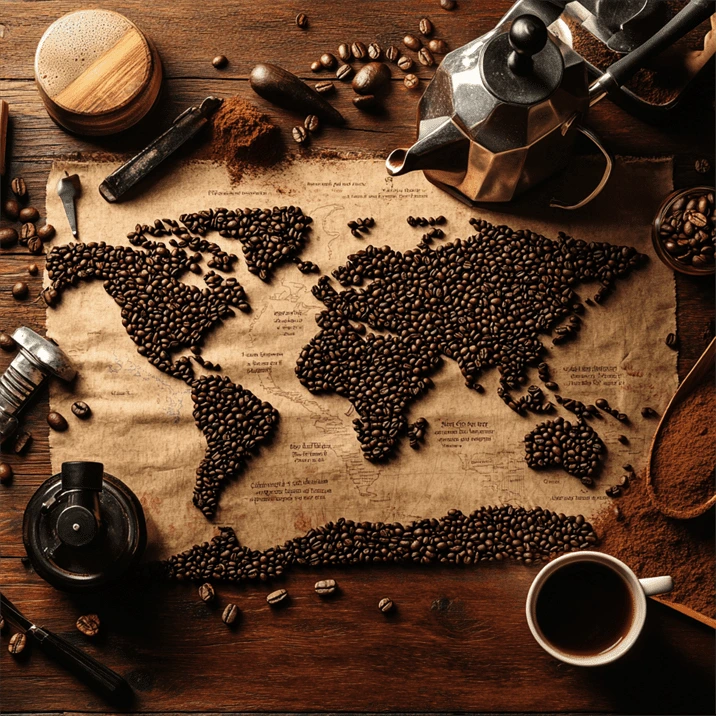The Rise of Solid-State Coffee: Innovation, Sustainability, and Market Growth
Table of Contents
The Future of Coffee Consumption
Coffee has been a staple beverage for centuries, but innovation is now reshaping the way we experience it. One of the most groundbreaking developments in the coffee industry is solid-state coffee—a revolutionary format that transforms liquid coffee into a portable, long-lasting, and more sustainable product. Unlike traditional instant coffee, solid-state coffee retains the full aroma, flavor, and texture of freshly brewed coffee while eliminating the need for excessive packaging, water waste, and preservatives.
In this article, we explore the concept of solid-state coffee, its benefits, economic potential, and its role in the future of the global coffee market.

What Is Solid-State Coffee?
is a form of coffee that has been transformed into a compact, dissolvable, or chewable solid while maintaining its authentic taste and caffeine content. Unlike freeze-dried instant coffee, which often loses flavor during processing, solid-state coffee undergoes advanced dehydration and encapsulation techniques that preserve its freshness.
This innovation is particularly appealing for consumers looking for:
- Convenience: No need for brewing or machines—just dissolve in water or consume as is.
- Sustainability: Reduced waste from disposable cups and single-use coffee pods.
- Portability: Ideal for travelers, hikers, and busy professionals.
How Solid-State Coffee is Made
Solid-state coffee production involves several steps to ensure high quality while preserving flavor and aroma:
| Step | Process Description |
|---|---|
| 1. Brew Extraction | High-quality coffee is brewed using controlled temperature and pressure. |
| 2. Dehydration | Using advanced drying techniques (e.g., vacuum dehydration or low-temperature drying) to remove water while keeping essential oils and flavors intact. |
| 3. Encapsulation | The concentrated coffee is then encapsulated into a solid form, such as tablets, cubes, or bars. |
| 4. Packaging | The final product is packed in biodegradable or recyclable packaging for easy distribution. |
Advantages
state coffee offers multiple benefits compared to traditional brewing methods and instant coffee.
1. Sustainability & Environmental Impact
One of the major challenges in the coffee industry is waste production. Disposable coffee cups, plastic pods, and excessive water usage contribute to environmental degradation. Solid-state coffee addresses this issue by:
- Eliminating the need for plastic pods (a major issue with single-serve coffee machines).
- Reducing water waste from brewing methods.
- Using biodegradable or minimal packaging, reducing landfill waste.
Example: According to the Environmental Protection Agency (EPA), over 50 billion coffee cups end up in landfills every year. Solid-state coffee could significantly reduce this number.
2. Convenience and Portability
For consumers with fast-paced lifestyles, solid-coffee offers unparalleled convenience:
- No brewing required: Simply dissolve in hot water or consume as is.
- No equipment needed: Unlike traditional coffee, there’s no need for coffee makers or filters.
- Travel-friendly: Ideal for outdoor adventures, business trips, or long commutes.
3. Economic and Market Potential
The coffee industry is worth over $100 billion globally, and innovations like state coffee could open new market segments.
| Aspect | Potential Growth |
|---|---|
| Market Expansion | New consumer base, including health-conscious and eco-friendly consumers. |
| Cost Efficiency | Reduced logistics and shipping costs due to lightweight packaging. |
| Subscription Models | Monthly delivery of solid-state coffee for convenience seekers. |
Companies investing in solid-state coffee technology have the potential to disrupt the $30 billion instant coffee market while offering a premium alternative to traditional instant coffee.
Challenges and Future
While promising, solid-coffee faces some challenges before becoming mainstream:
- Consumer Education: Many coffee drinkers are unfamiliar with the concept and may require demonstrations or samples.
- Production Costs: High-quality processing methods can be expensive compared to instant coffee.
- Taste Preferences: Some consumers may still prefer the ritual of traditional brewing.
However, with advancements in food technology and increasing consumer demand for sustainable products, solid-state coffee is poised to become a major player in the coffee industry.
Example: As plant-based meats and alternative dairy products gained traction, solid-coffee could follow a similar trajectory in disrupting traditional consumption habits.
Conclusion
Solid-state coffee represents the next evolution in coffee consumption, combining sustainability, convenience, and innovation into one product. With the potential to reduce waste, improve efficiency, and cater to a growing market of eco-conscious consumers, solid-state coffee is set to transform the global coffee landscape. Whether as a dissolvable cube, a chewable bar, or a portable coffee shot, this futuristic approach is paving the way for a new coffee revolution.

